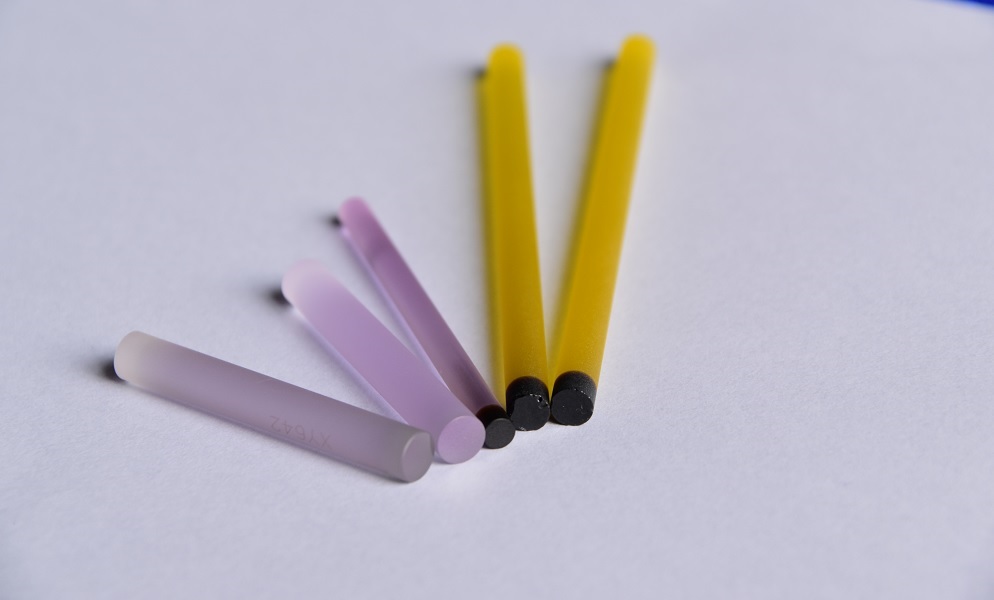Color rendering refers to the objective effect produced by the light emitted by the light source on the object and the degree of appearance of the true color of the object. It is an important indicator for evaluating the illumination source. The light source with high color rendering has better performance for color, and the color seen is close to the natural primary color; the light source with low color rendering performance is poor for color, and the color deviation seen is also large. If the proportion of the light contained in the light emitted by the light source is close to the natural light, the color seen by the human eye is more realistic. The spectral distribution of the light source determines the color rendering of the light source. The color rendering of the light source affects the color of the object observed by the human eye. Quantitative evaluation of the color rendering of the light source is an important aspect of evaluating the quality of the light source.
Generally, the artificial illumination source uses the general color rendering index as an evaluation index for color rendering, and the color rendering index is also an important parameter for measuring the color characteristics of the light source. A variety of test methods have been established for the calculation of the color rendering index of traditional light sources and related standards have been established, but white LEDs are a new type of light source for the lighting industry. Whether the traditional test methods are suitable for the analysis of the light color characteristics of white LEDs, Need to be studied in depth. In this paper, the related calculation methods of color rendering index are introduced and discussed, and the evaluation of color rendering of white LEDs is discussed.
First, the color rendering index calculation method and evaluation of LED problems
At present, the calculation method of the color rendering index of the light source is mainly the "color measurement method" formulated by CIE and the "Walter method" proposed by Walter. The "Walter Method" is essentially an improvement of the CIE "color measurement method". It is an empirical formula established by Walter to simplify the calculation process of the color rendering index in the standard method, which speeds up the calculation and has less error. Here is a brief introduction to the "color measurement method" developed by CIE.
In 1965, CIE developed a method for evaluating the color rendering of light sources, referred to as the “color measurement methodâ€. After revision in 1974, it was officially recommended for international adoption [1]. Evaluation of the color rendering index with the test color is the most effective method, which is consistent with the visual effect and is a standard method for calculating the color rendering index. According to the CIE regulations, the standard illuminant is used as the reference illumination source according to the correlated color temperature of the source to be tested. Generally, the Planck radiator is used as the reference standard for the low color temperature source (less than 5000K), and the standard illuminant D is Combined daylight) as a reference standard for high color temperature sources (greater than 5000K).
The CIE specifies that the color rendering index is divided into a special color rendering index Ri and a general color rendering index Ra. The evaluation uses a set of 14 test color samples, of which 1-8 test colors are used for the calculation of the general color rendering index. These 8 color samples are selected from the Munsell color scale and contain various representative color tones. Medium chroma and lightness, as shown in Figure 1.
Figure 1 Color sample No. 1-8 in CIE
In addition to the eight standard color samples for calculating the general color rendering index, CIE also provides six standard color samples for calculating the color rendering index of special colors, which are selected for some special color rendering performance of the test light source. Higher red, yellow, green, blue and leaf green and European and American skin color, as shown in Figure 2. China's method of calculating the color rendering index of light sources has also increased the color samples of Chinese women's skin color [2].
Figure 2 Color sample 9-14 in CIE
Laser crystals of various materials including Neodymium Doped Yttrium Aluminum Garnet (Nd:YAG), Yb-doped Yttrium Aluminum (Yb:YAG), Nd-doped Yttrium Orthovanadate ( Nd:YVO4 ), Nd-doped Gadolinium Orthovanadate ( Nd:GdVO4 ), Cr doped Yttrium Aluminum Garnet ( Cr4+:YAG ) and diffusion bonded composite crystal ( DBC crystal ) are available from Coupletech Co., Ltd.
Coupletech could supply many kinds of Laser Crystal with larger dimension, higher damage threshold, higher conversion efficiency and higher reliability for higher power Solid-state laser applications. We have strict quality control and continuous innovation. Coupletech's various finished laser rods, laser crystal, slabs and thin wafers as well as supplying laser crystal with brewster's angle, which is widely for use in industrial, medical and scientific applications.

S
Laser Crystal
Yb:YAG Crystals,Nd:YAG Crystals,Nd:YVO4 Crystals,Cr:YAG Crystals,Diffusion Bonded Crystals
Coupletech Co., Ltd. , http://www.coupletech.com
